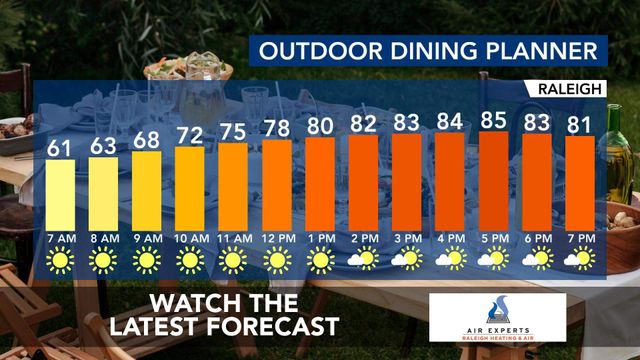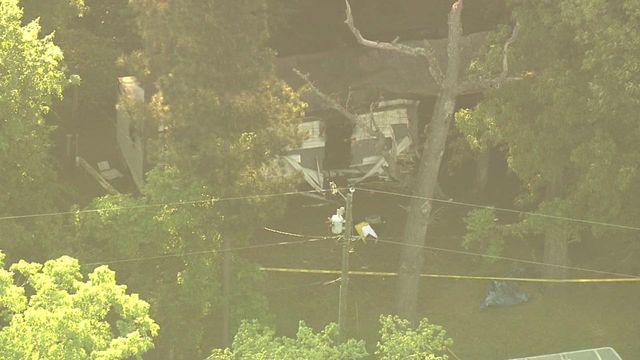Embrace AI, hands-on projects and listening to kids. How Wake students think schools can improve

School employees need to spend more time listening to their students.
That was the message Thursday from a handful of Wake County students who spoke at the Innovative Pathways to Excellence and Equity Summit in Raleigh.
The Wake County Public School System hosted the summit, which about 100 educators from eight states attended.
Students Ian Berger and Tsadiq Jones said many students don’t know who their counselors are and don’t feel heard by their busy teachers or administrators.
Eric Cheng suggested embracing artificial intelligence in creative lessons, and Sivaranjani Velmurugan urged schools to do more real-world projects, such as having computer science students design a school website.
The Wake County school system asked the students to participate in the summit, and the students formed their own presentations after being asked to tell educators how they can improve schools.
In all, the students’ suggestions centered around getting kids more interested and involved in school.
Educators repeatedly applauded the students.
After their presentations, Wake County Public School System Superintendent Robert P. Taylor summarized the day and summit as being powerful.
“We want this to be something that we continue, continue to exchange ideas and keep these connections together,” he said, “because that is how we're going to ultimately move our students forward, our community forward and our nation forward.”
Communicating with students
Students have to be engaged in school, and they need adults to help engage them, Jones said.
“An object in motion will continue to stay in motion unless acted upon by another force, right?” Jones said, referencing one of Isaac Newton’s laws. “This applies to people… A student will continue to walk through the hallway with their hoodie up, with their black hoodie, their backpack on, go to school, and they don't talk to anyone. But you have to be that other force to stop them.”
Jones, an Apex Friendship High School student, said he’s talked to fellow students who aren’t as engaged in school as they want to be, because of problems at home that he think adults — and even peers — don’t know about. He mentioned a student who wanted to play football but pulled out when the season came because he was too busy working two part-time jobs to support his family. Some kids don’t talk even to other kids, because they’re trapped under false assumptions that most other students have their lives figured out, Jones said.
He suggested requiring students and counselors to meet twice each year, for at least a few minutes, in what he called wellness checks. That way, he said, students would know their counselors and have an adult in school who knows what’s going on in their lives.
“They’re literally overlooked,” he said. “They do not understand that they have somebody to talk to.”
Berger, a Heritage High School student, said a lot of the feedback he gets from other students and teachers is that they don’t feel heard.
Teachers feel like they lack control, he said. Students feel like their teachers are too busy to get to know them and that they don’t know their counselors or administrators.
Students who are from marginalized community, like LGBTQ+ students, feel this more because of the culture wars that have made schools more cautious about things like the books they keep in their libraries, he said.
Berger suggested school forums for students to speak directly to administration.
Embracing technology
Artificial intelligence can quickly create lessons and tailor them around a student’s interests, said Cheng, a Green Hope High School student.
But it’s also practical, he said. It can save teachers time, and students can — and often do — use artificial intelligence tools to help them study. Chat GPT isn’t the same as a human tutor, but it can help students understand concepts they didn’t quite grasp in school. Students can ask Chat GPT to explain concepts to them in simple terms, or “like I’m a 5-year-old,” Cheng said, to murmurs of assent in the crowd.
Wake Chief of Schools Jackie Ellis said ChatGPT has helped her two teenage children learn, which has saved her headaches from trying to help them after a long day of work.
“It changed my relationship with my own kids,” she said.
Cheng acknowledged that people will use artificial intelligence for academic dishonesty, like plagiarism. But he said some tools have been tailored for use in classrooms in ways that can prevent some of that, and he expects more artificial intelligence tools for educators will come.
Hands-on learning
A project in her sophomore year was the most transformative of Sivaranjani Velmurugan’s career.
She took Python 1 — a coding class —at Green Level High School. In that class, she wrote a program that used the school’s library database to show students where the book they were looking for was in the library. An arrow would pop up on a map, pointing them to the section they needed to walk to.
Other classmates made a website for the school’s athletics department. Another group made a randomized seating chart for the high school’s upcoming ACT test.
Her educational philosophy now is, “How can I use what I know to make something real?”
That’s a challenge that be put before every student of any proficiency level, she said.
Projects, especially group projects, help students master material and learn soft skills that will be required in their careers and adulthood.
Real-world problem-solving projects are also often motivating and satisfying, she said. They don’t feel like chores and can make people feel like they’re making a difference.
Instead of just teaching students ot read another chapter or pass another module, schools should be creating students to go out in the real world, Vlemurugan said.
“They should also be teaching students how to be comfortable with being uncomfortable,” she said. “They should be teaching students how they can use their own knowledge base their own existing knowledge, no matter how limited it is, to go out and to make a real world impact.”











